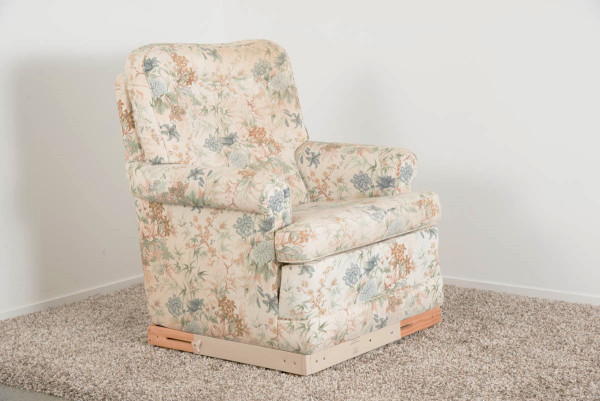Chair and bed raisers Ngā whakaaranga tūru me moenga
If you become less mobile, you may have difficulty getting into or out of a bed or chair. Raising your chair or bed can make it much easier to stand up and sit down. It can also help to prevent falls.
Raisers for your comfort and safety
A chair or bed raiser is a device made out of wood or strong plastic that is used to raise the height of a chair, sofa or bed. Raisers will:
- make it easier to stand up or sit down on your own, without needing someone else to help
- help prevent falls
- mean you will not have to buy new furniture.
When sitting or standing you should avoid:
- reaching to support yourself on furniture such as a coffee table, which you may miss, causing you to fall
- using walking frames or sticks for support, as they can roll away or slip, especially on wood or tile floors
- using a cushion to raise your seat, as this reduces the height difference between your bottom and the arm rests, making it more difficult to push up from the arm rests to stand up.
A chair or bed raiser is a safer option.
Raisers need to be custom fitted. Ask the retailer or supplier to fit them for you or ask an occupational therapist for advice.
Raisers do not always work for furniture with very wide legs or large feet.

A trough chair raiser fitted to a lounge chair.
Choosing a chair or bed raiser
It is important to choose the correct type of chair or bed raiser.
Step 1 — identify what sort of legs or base your furniture has so you can choose the safest option.
There are 2 main types of raiser — blocks and troughs.
- Chair or bed blocks are plastic or wooden blocks that are designed to sit under each leg of your chair or bed. These can be used if your furniture has legs or castors.
- Chair troughs are sometimes called chair-raising platforms. They are braced together and sit under the chair. You will need a trough if you have a platform base, runners, or recliner chair. There are many different types of chair troughs for different types of chairs. Chairs can tip over if you do not use the right trough. Bed troughs go under the legs of your bed and are also braced together at each end.
Step 2 — work out how much to raise your furniture by. You might need some help to get the measurements.
- Measure the distance from the back of your knees to the floor.
- While you are sitting on the bed or chair, measure the distance from under your thighs down to the floor. Your weight will squash the cushion or mattress — this is the measurement you need.
- Subtract the second measurement (under your thighs to floor) from the first measurement (back of your knees to the floor). The difference is how much you need to raise the height by.
Installing a chair or bed raiser
Installing bed and chair raisers can be difficult — do not try to do it alone. Ask someone to help you or get a supplier or occupational therapist to do it for you. Your chair or bed should not rock or wobble once the raisers are fitted.
If you need any more information about how to use your chair or bed raiser safely, contact the supplier or an occupational therapist.
Finding a supplier
Age Concern has a directory of businesses and organisations that supply disability and mobility equipment for people of all ages.